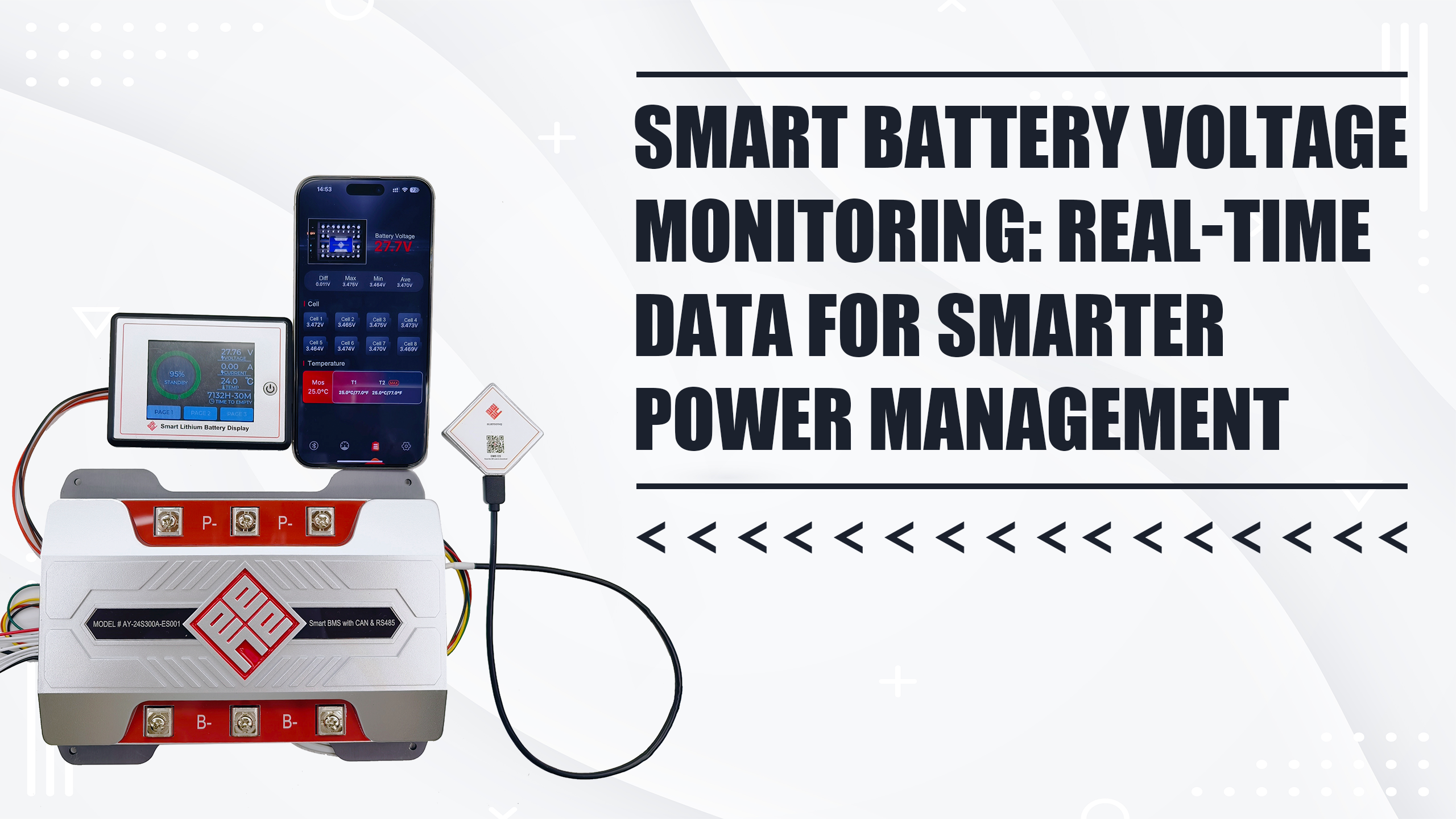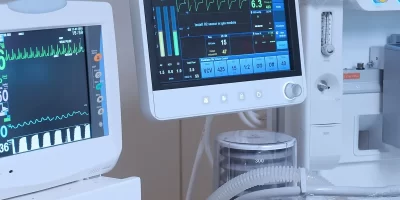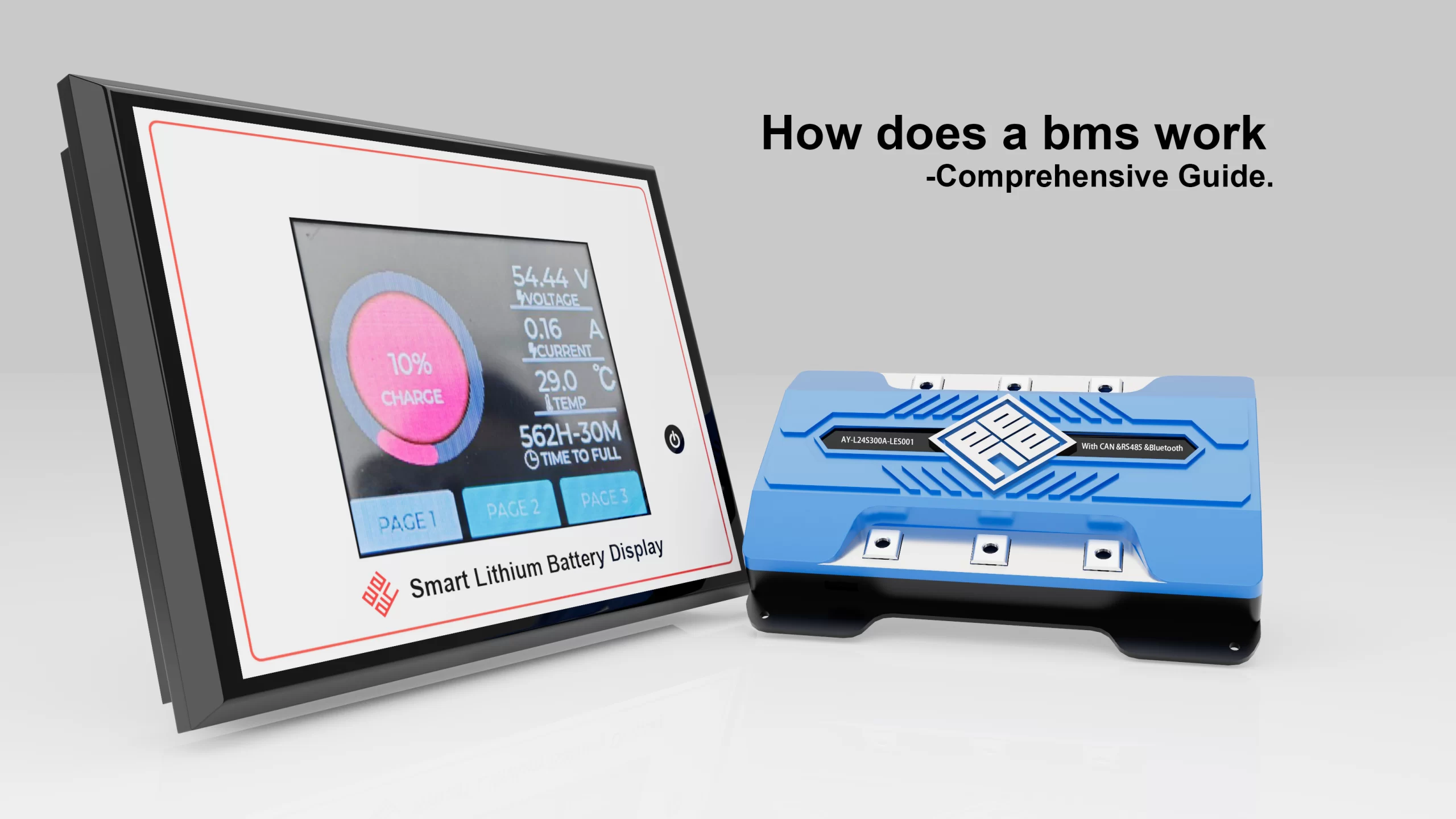ホームページ About Us EVENTS & NEWS Smart Battery Voltage Monitoring: Real-Time Data for Smarter Power Management
Smart Battery Voltage Monitoring: Real-Time Data for Smarter Power Management
Smart Battery Voltage Monitoring: Real-Time Data for Smarter Power Management
Battery performance and dependability are critical in today’s world of ever-more-advanced devices, electric cars, and energy storage systems.
One of the most critical technologies enabling these capabilities is battery voltage monitoring.
Intelligent battery voltage monitoring guarantees optimal power utilization, system security, and prolonged battery lifespan, rendering it indispensable in devices ranging from smartphones to electric forklifts.

The Importance of Battery Voltage Monitoring
Battery voltage monitoring refers to the continuous tracking and evaluation of the electrical potential difference between the positive and negative terminals of a battery.
A battery management system (BMS) can determine the health, charge level, and possible issues of a battery by accurately measuring its voltage.
Understanding a battery’s present condition and making wise operational decisions both depend on voltage monitoring.
Without accurate battery voltage monitoring,overcharging, deep draining, and overheating—all of which can seriously harm the battery or even pose safety risks—would be practically hard to avoid.
Therefore, an essential component of any management system (BMS) is voltage monitoring.
Core Functions of Battery Voltage Monitoring
State of Charge (SOC) Estimation: Voltage is one of the key indicators used to estimate how much energy remains in a battery.
State of Health (SOH) Analysis: Long-term voltage trends help assess battery aging and degradation.
Protection Mechanisms: Accurate voltage data allows the BMS to prevent over-voltage and under-voltage situations.
Cell Balancing: Detects imbalances among cells to trigger equalization algorithms, improving lifespan and efficiency.
System Architecture: How Battery Voltage Monitoring Works
Battery voltage monitoring systems typically consist of several components:
Voltage Sensors: Integrated circuits or modules that sample voltage levels at high frequency.
Analog-to-Digital Converters (ADC): Convert voltage signals into digital data for processing.
Microcontrollers or Processors: Run algorithms to analyze voltage data.
Communication Modules: Transfer real-time data to external systems (e.g., CANbus, SMBus, UART).
The system tracks the voltage of each individual cell in multi-cell systems, such as those seen in industrial energy storage units or electric cars.
This data is coordinated by a central BMS, which takes action when anomalies arise.
From Raw Data to Actionable Insights
Smart battery voltage monitoring doesn’t stop at data collection.
Kalman filters and machine learning models are examples of embedded algorithms that the system can use to:
Predict battery failures before they happen.
Estimate remaining run-time based on usage patterns.
Adjust charging and discharging behavior dynamically.
Report data to cloud platforms for predictive maintenance and analytics.
These features are crucial for sectors including robots, medical gadgets, electric vehicles, and aerospace that mostly depend on battery performance.
Applications Across Key Industries
1. Electric Vehicles (EVs)
Electric vehicles depend on voltage monitoring to manage high-capacity battery packs.
Voltage monitoring guarantees adherence to car safety regulations and helps the BMS identify hazardous situations.
For instance, voltage data is utilized to prevent thermal runaway during fast charging.
2. Consumer Electronics
Compact BMS solutions are used in laptops, tablets, and smartphones to extend battery life while maintaining security.
Safe charging and power transmission under a range of operational situations are guaranteed via voltage monitoring.
3. Industrial Forklifts and Material Handling
Because of their high power requirements and extended operating hours, forklifts require reliable BMS systems.
Accurate battery voltage monitoring helps prevent unexpected shutdowns, improves energy efficiency, and prolongs battery replacement intervals.
4. Renewable Energy Storage
Battery banks are essential for storing energy in solar and wind power systems.
Smart battery voltage monitoring in this context ensures charge/discharge cycles are managed optimally, extending the life of expensive battery arrays.
5. Medical Equipment
Defibrillators and infusion pumps are examples of portable medical equipment that must be completely dependable.
Real-time insights from voltage monitoring assist guarantee that the gadget will operate as intended in emergency situations.
Key Features of a High-Quality Battery Voltage Monitoring System
High Accuracy: Essential for reliable SOC and SOH estimations.
Real-Time Monitoring: Enables immediate detection of anomalies and quick system responses.
Low Power Consumption: Particularly important for portable devices.
Scalability: Support for monitoring multiple cells in series or parallel configurations.
Data Logging: Historical data enables analysis of performance trends and predictive maintenance.
Challenges in Battery Voltage Monitoring
Precision vs. Cost: High-accuracy sensors and ADCs can be expensive.
Noise and Interference: Accurate voltage measurement requires strong signal conditioning.
Temperature Compensation: Voltage readings can fluctuate with temperature, requiring sophisticated correction algorithms.
Calibration and Drift: Long-term use requires periodic recalibration to ensure accuracy.
Advances in Battery Voltage Monitoring
Wireless voltage monitoring devices, which simplify cabling and enable modular battery designs, are recent innovations.
Smart grids and next-generation EV platforms are already including AI-powered voltage monitoring solutions, which provide improved predictive analytics and system optimization.
Better scalability and quicker fault separation are made possible by distributed monitoring, which uses tiny, specialized microcontrollers for every cell group.
Furthermore, firmware updates and remote monitoring are made possible by cloud integration.
Maintenance Best Practices
Regular Calibration: Especially important in high-precision applications.
Firmware Updates: Keep BMS firmware up to date for improved accuracy and new features.
Environmental Monitoring: Protect the system from moisture and temperature extremes.
Diagnostics Tools: Use software utilities to check voltage drift, sensor failure, and communication errors.
The Future of Battery Voltage Monitoring
Looking ahead, battery voltage monitoring will continue to evolve, driven by trends such as:
Artificial Intelligence Integration: Smarter analytics and predictive maintenance.
IoT Connectivity: Real-time cloud integration for fleet management and grid services.
Nano-Sensor Technology: Enabling ultra-small, ultra-efficient monitoring systems.
Edge Computing: On-device analytics reduce reliance on cloud processing, improving speed and data privacy.
Advantages of Shenzhen Ayaa Technology Co., Ltd.
Shenzhen Ayaa Technology Co., Ltd. specializes in the development and manufacturing of high-performance battery management systems (BMS) with advanced voltage monitoring capabilities.
EVs, drones, forklifts, energy storage, and medical applications all make extensive use of their BMS solutions.
Ayaa’s smart BMS units feature:
Multi-channel high-resolution voltage monitoring
Integrated thermal and current protection
CANbus, SMBus, and Bluetooth communication options
Active/passive balancing support
Industrial-grade precision under extreme conditions
The AY-L24S300A-ES001 model, for example, has a voltage monitoring resolution of better than ±5mV and can accommodate up to 24 cells in series.
This guarantees consistent performance in demanding applications like electric utility vehicles and forklifts.
FAQ
Q:How do you monitor battery voltage?
A:There are four main techniques:
1. A resistor divider.
This is possibly the most straightforward method of voltage monitoring.
2. Reference and Comparator Voltage.
The circuit depicted in Figure 3 offers the same fundamental features as a straightforward reset integrated circuit.
3. Analog-to-digital converter (ADC) on board
4. Reset the IC
Q:What voltage should I keep my battery at?
A:Most car batteries will register at least 12.6 volts when fully charged (around 13.0–12.2 volts for OPTIMA YELLOWTOPs), although low voltage does not always indicate a defective battery.
Even when they are not in use, modern cars have high electricity requirements.
Q:How can I monitor my car battery health?
A:First, attach the voltmeter’s positive side to the positive (red) terminal of the battery after carefully removing the covers from the terminals.
Attach the voltmeter’s negative side to the black, negative terminal after that.
The range of a healthy battery is 12.4V to 12.7V.
Smart battery voltage monitoring is no longer just a safety feature—it’s a strategic tool for optimizing performance, extending battery life, and enabling the next generation of energy technologies.
Accurate and real-time voltage monitoring is essential whether you are creating drones and medical gadgets, implementing renewable storage, or constructing electric cars.
Shenzhen Ayaa Technology Co., Ltd. remains at the forefront of this innovation, delivering advanced BMS solutions that integrate smart battery voltage monitoring with intelligent protection, communication, and control features.
Ayaa is your dependable partner for scalable and dependable battery management.













